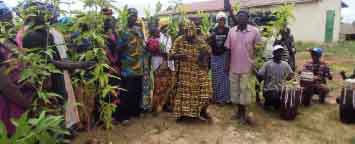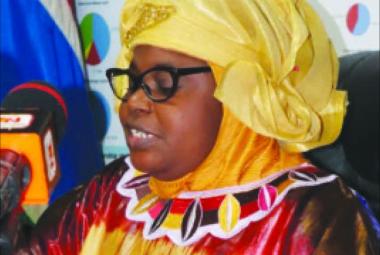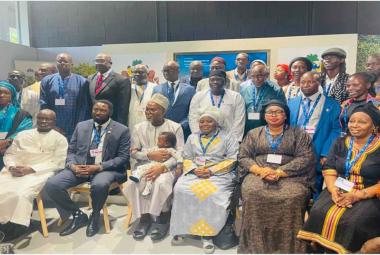By Awa Sowe
Towards the restoration of the ecosystem, Future In Our Hands (FIOH) Sweden recently embarked on a mass community-tree planting exercise with a donation of three thousand cashew seedlings and over one thousand mango seedlings in Ker Ardo, in the North Bank Region.
The purpose of the tree planting exercise that took place at the boarder of The Gambia and Senegal is to combat deforestation and global warming, as well as re-establish the link between local communities and nature. The activity is also meant to eradicate practices that led to loss of biodiversity and as well encourage community actions against the phenomenon of climate change.
The initiative, spearheaded by Kristina Lundahl, Mr Alhaji Sanneh and supported by the Alkalo will help engage everyone in the community to plant trees as a measure to replace the lost trees in and outside the forests.
Delivering a statement at the end of a massive tree-planting exercise, Mr Alhaji Sanneh mentioned the numerous benefits that come with having enough trees, adding that Climate Change has now become a global menace, affecting lives and livelihoods of people.
However, he went on to explain that FIOH Sweden intends to impact the lives of our youth, women, children and the elderly by enhancing the quality of the environment through making the community green and clean with many climate benefits that can help reduce heavy storms from destroying our homes.
He urged other organisations to emulate such initiative as trees provide oxygen, serve as food and wind breakers among other benefits. He thanked the community of Ker Ardo for the implementation and FIOH Sweden for funding the programme.
The Alkalo of Kerr Ardo Village, Mr Salifu Jallow thanked all participants, adding that the seedlings will be planted in every home in the community. He further expressed gratitude to the community for the cooperation while applauding FIOH Sweden for the initiative.
The outcome of the project is expected to increase protected areas coverage in Kerr Ardo, increase ecological connectivity between and within different priority biodiversity habitats by creating Indigenous Community Conserved Areas.
The activity was attended by the women and youth of the community and the next phase will include and engage the nearby villages as tree planting is a concern for all.






